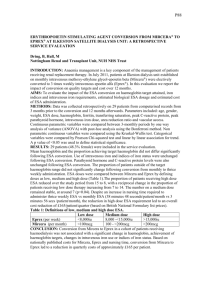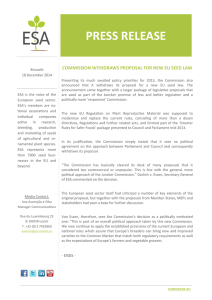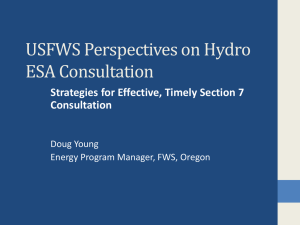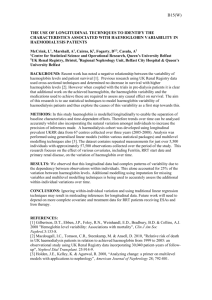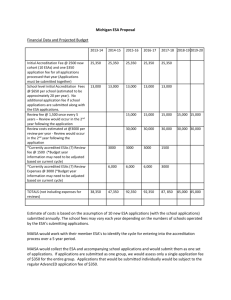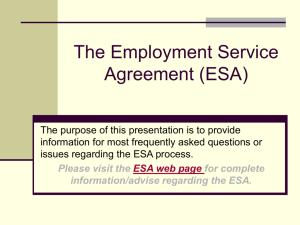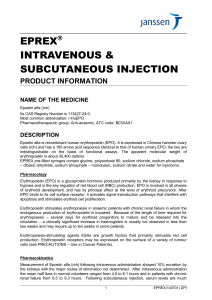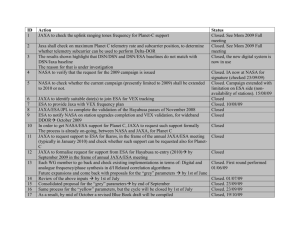ESA therapy has successfully been used to treat the anaemia of
advertisement
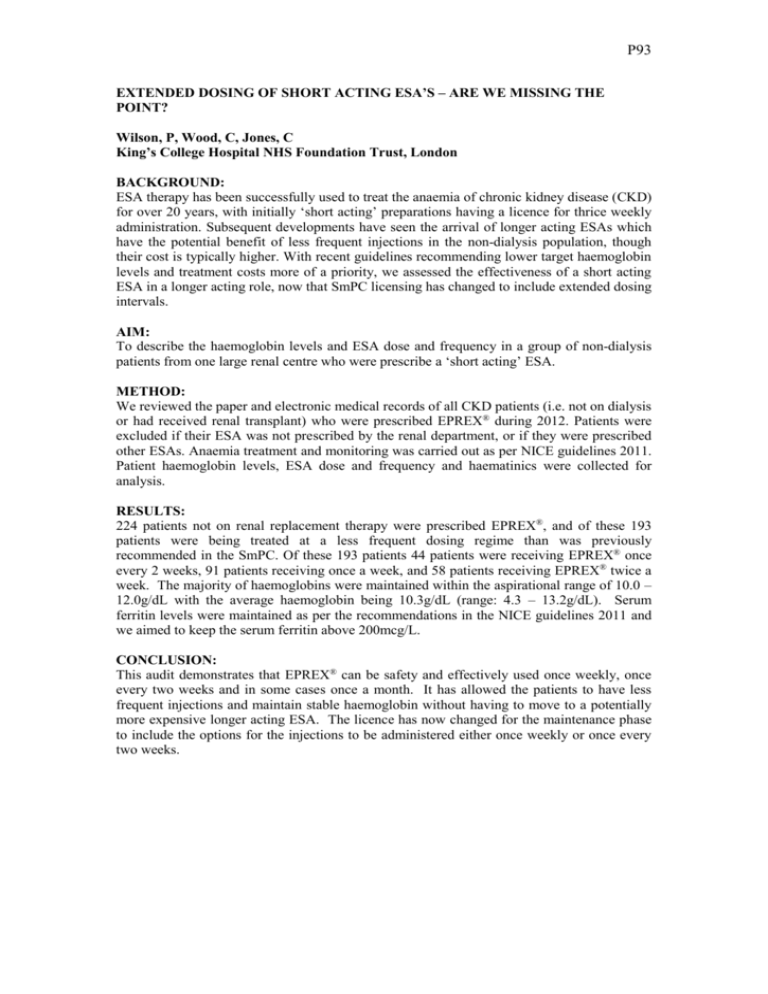
P93 EXTENDED DOSING OF SHORT ACTING ESA’S – ARE WE MISSING THE POINT? Wilson, P, Wood, C, Jones, C King’s College Hospital NHS Foundation Trust, London BACKGROUND: ESA therapy has been successfully used to treat the anaemia of chronic kidney disease (CKD) for over 20 years, with initially ‘short acting’ preparations having a licence for thrice weekly administration. Subsequent developments have seen the arrival of longer acting ESAs which have the potential benefit of less frequent injections in the non-dialysis population, though their cost is typically higher. With recent guidelines recommending lower target haemoglobin levels and treatment costs more of a priority, we assessed the effectiveness of a short acting ESA in a longer acting role, now that SmPC licensing has changed to include extended dosing intervals. AIM: To describe the haemoglobin levels and ESA dose and frequency in a group of non-dialysis patients from one large renal centre who were prescribe a ‘short acting’ ESA. METHOD: We reviewed the paper and electronic medical records of all CKD patients (i.e. not on dialysis or had received renal transplant) who were prescribed EPREX® during 2012. Patients were excluded if their ESA was not prescribed by the renal department, or if they were prescribed other ESAs. Anaemia treatment and monitoring was carried out as per NICE guidelines 2011. Patient haemoglobin levels, ESA dose and frequency and haematinics were collected for analysis. RESULTS: 224 patients not on renal replacement therapy were prescribed EPREX®, and of these 193 patients were being treated at a less frequent dosing regime than was previously recommended in the SmPC. Of these 193 patients 44 patients were receiving EPREX® once every 2 weeks, 91 patients receiving once a week, and 58 patients receiving EPREX® twice a week. The majority of haemoglobins were maintained within the aspirational range of 10.0 – 12.0g/dL with the average haemoglobin being 10.3g/dL (range: 4.3 – 13.2g/dL). Serum ferritin levels were maintained as per the recommendations in the NICE guidelines 2011 and we aimed to keep the serum ferritin above 200mcg/L. CONCLUSION: This audit demonstrates that EPREX® can be safety and effectively used once weekly, once every two weeks and in some cases once a month. It has allowed the patients to have less frequent injections and maintain stable haemoglobin without having to move to a potentially more expensive longer acting ESA. The licence has now changed for the maintenance phase to include the options for the injections to be administered either once weekly or once every two weeks.
